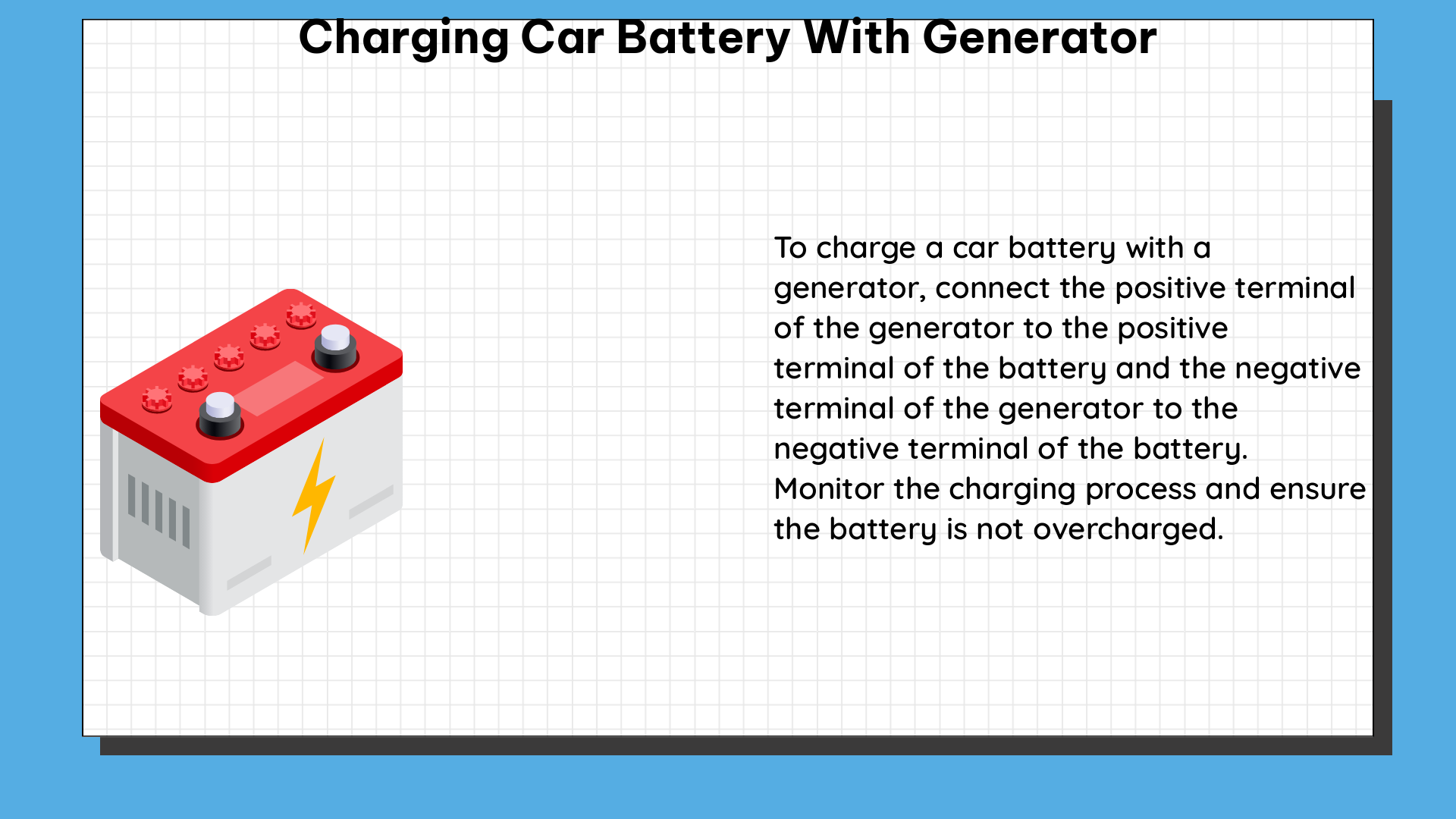Charging a car battery with a generator involves converting mechanical energy from the generator into electrical energy that can be stored in the battery. However, this process requires careful consideration of several technical specifications and compatibility factors to ensure a successful and efficient charging process.
Power Requirements
The generator used to charge a car battery must provide a minimum of 10 kilowatts (kW) of power. This is because most portable electric generators are too small to deliver the necessary power, typically ranging from 2 kW to 8 kW. As a result, a permanent or standby generator is usually required to charge a car battery effectively.
Standby generators capable of powering an entire home and charging an electric vehicle can provide the necessary power, but they are large and expensive, typically costing between $7,000 and $20,000.
Compatibility Considerations

When using a generator to charge a car battery, it is crucial to ensure that the generator and battery are compatible. For example, Tesla vehicles require a True Sine Wave electrical output to avoid damaging the battery. Therefore, it is essential to check the documentation for both the car and the generator before attempting to connect them.
Portability Challenges
Portability is a significant challenge when it comes to using a generator to charge a car battery. It is difficult to create a backup power source that is small enough to carry in a trunk while still being powerful enough to deliver a significant boost to the car’s battery. Currently, there is one promising option on the market: the ZipCharge Go, a portable power bank designed specifically for electric vehicles.
Standard Charging Methods
In addition to using a generator to charge a car battery, there are three standard ways to charge an electric vehicle:
- Level 1 Charging: This method uses a 120-volt residential power source and can take as much as 40 hours to fully charge a car.
- Level 2 Fast Charging: This method uses 240-volt stations and can fully charge most EVs in under five hours.
- Level 3 DC Fast Charging: This method uses direct current (DC) to charge a vehicle much faster but is impractical and too expensive for use in most homes.
Generator Efficiency
When using a generator to charge a car battery, it is important to consider the efficiency of the generator. No known generators are 100% efficient, so the yield of electrical power will be decreased by the lack of efficiency.
For example, a trained cyclist can produce about 400 watts of mechanical power for an hour or more, but adults of good average fitness average between 50 and 150 watts for an hour of vigorous exercise. A healthy, well-fed laborer can sustain an average output of about 75 watts over the course of an 8-hour work shift.
DIY Charging with a Generator
To charge a car battery with a generator, follow these steps:
- Ensure Sufficient Power: Verify that the generator provides at least 10 kilowatts of power.
- Check Compatibility: Ensure that the generator’s electrical output is compatible with the car’s battery, especially for Tesla vehicles that require True Sine Wave output.
- Consider Efficiency: Understand the efficiency limitations of the generator and plan accordingly.
- Use Standard Charging Methods: If possible, utilize Level 1, Level 2, or Level 3 charging methods to charge the car battery.
By following these steps and understanding the technical specifications and challenges involved, you can successfully charge a car battery using a generator, although it is important to weigh the costs and benefits of this approach.
References
Can You Charge an Electric Car With a Generator or Backup Battery?
Using a generator to charge 2 batteries – Physics Forums
Battery Charging using Variable speed generator | All About Circuits

The lambdageeks.com Core SME Team is a group of experienced subject matter experts from diverse scientific and technical fields including Physics, Chemistry, Technology,Electronics & Electrical Engineering, Automotive, Mechanical Engineering. Our team collaborates to create high-quality, well-researched articles on a wide range of science and technology topics for the lambdageeks.com website.
All Our Senior SME are having more than 7 Years of experience in the respective fields . They are either Working Industry Professionals or assocaited With different Universities. Refer Our Authors Page to get to know About our Core SMEs.